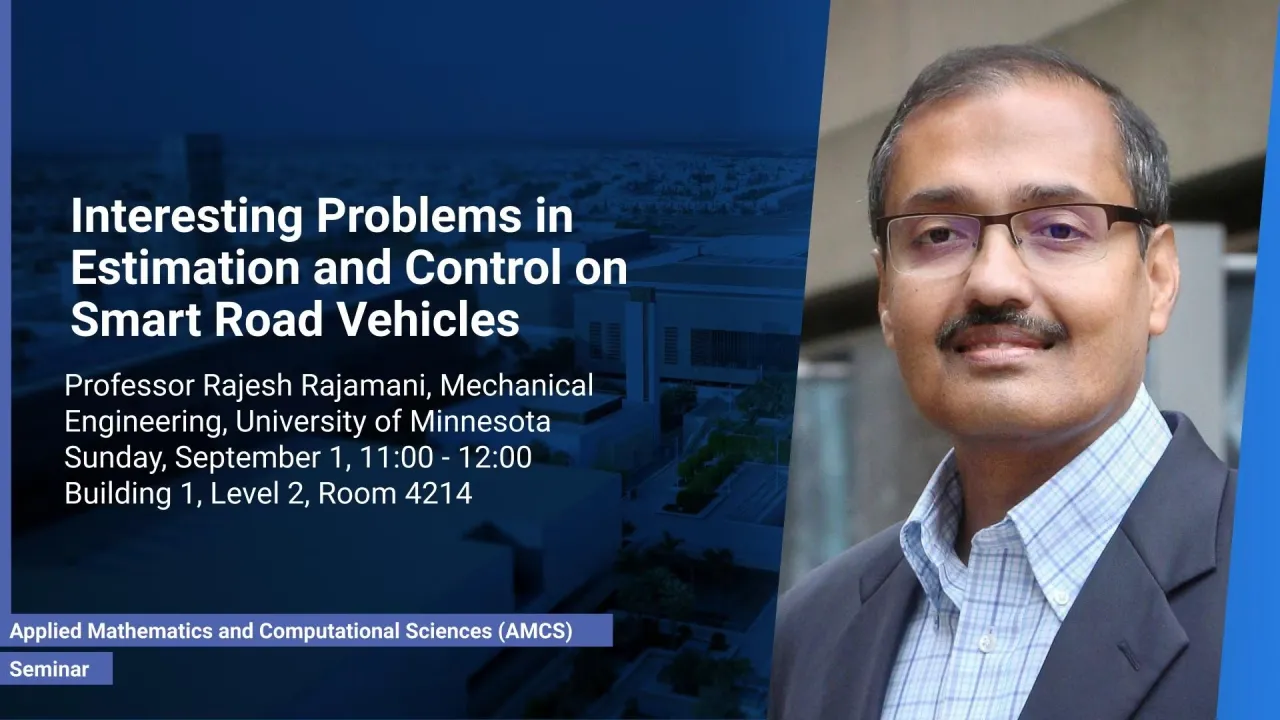
Interesting Problems in Estimation and Control on Smart Road Vehicles
A number of exciting vehicle automation and active safety systems are being developed by research groups around the world. This talk focuses on novel sensors, estimation algorithms and control systems that can fill critical gaps in the automation technologies under development. The first part of this seminar describes interesting sensing and estimation solutions that can significantly improve the effectiveness of active safety systems. The second part of the seminar describes the development of a new class of narrow commuter vehicles designed to address traffic congestion, improve highway mobility and provide very high fuel economy. The final part of the seminar describes the development of a smart bicycle with instrumentation that can track trajectories of nearby vehicles on the road and provide warnings to the motorist, if a potential car-bicycle collision is detected.
Overview
Abstract
A number of exciting vehicle automation and active safety systems are being developed by research groups around the world. This talk focuses on novel sensors, estimation algorithms and control systems that can fill critical gaps in the automation technologies under development. The first part of this seminar describes interesting sensing and estimation solutions that can significantly improve the effectiveness of active safety systems. The solutions discussed here include tire deformation sensors, observers for parameter varying nonlinear systems, unknown disturbance observers for predicting and preventing tripped rollovers, and magnetic sensor based algorithms for detection of imminent unavoidable crashes. The second part of the seminar describes the development of a new class of narrow commuter vehicles designed to address traffic congestion, improve highway mobility and provide very high fuel economy. Results from a prototype narrow vehicle with stability-enhancing automatic tilt control developed at the University of Minnesota are presented. The final part of the seminar describes the development of a smart bicycle with instrumentation that can track trajectories of nearby vehicles on the road and provide warnings to the motorist, if a potential car-bicycle collision is detected. Significant challenges from sensor cost and size constraints for a bicycle, and from the need to track highly complex urban road traffic are discussed. Experimental results and videos of the smart bicycle system’s performance are presented.
Brief Biography
Rajesh Rajamani obtained his M.S. and Ph.D. degrees from the University of California at Berkeley and his B.Tech degree from the Indian Institute of Technology at Madras. He joined the faculty in Mechanical Engineering at the University of Minnesota in 1998 where he is currently the Benjamin Y.H. Liu-TSI Endowed Chair Professor. His active research interests include sensing and estimation for autonomous vehicles and other smart systems.
Dr. Rajamani has co-authored over 140 journal papers and is a co-inventor on 13 patents/ patent applications. He is the author of the popular book “Vehicle Dynamics and Control” published by Springer Verlag. Dr. Rajamani is a Fellow of ASME and has been a recipient of the CAREER award from the National Science Foundation, the 2001 Outstanding Paper award from the journal IEEE Transactions on Control Systems Technology, the Ralph Teetor Award from SAE, and the 2007 O. Hugo Schuck Award from the American Automatic Control Council.
Several inventions from his laboratory have been commercialized through start-up ventures co-founded by industry executives. One of these companies, Innotronics, was recently recognized among the 35 Best University Start-Ups of 2016 in a competition conducted by the US National Council of Entrepreneurial Tech Transfer.